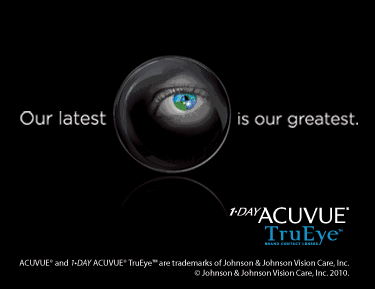|
Alden Optical Expands Phoenix Program
Alden Optical, Inc., manufacturer of custom made-to-order soft and GP contact lenses, announced that it has expanded the popular Phoenix Program to include a significant number of additional lenses recently discontinued by the major contact lens manufacturers.
The Phoenix Program was developed in 2010 to provide practitioners with a solution when faced with discontinued soft sphere brands. Alden Optical offers lenses in polymacon, methafilcon, Benz 3X and Benz 5X in any base curve/diameter combination and with spherical powers of +/- 30.00D. With the Phoenix Program, the eyecare practitioner contacts Alden Optical or an Authorized Distributor with the patient's Rx and current brand with specifications. Alden Optical will custom manufacture a very close replacement to the original lens and ship it within two business days.
For more information, including a complete conversion guide, visit http://aldenoptical.com/products/custom-soft/sphere/phoenix.
| -- ADVERTISEMENT -- |

|
CO Announces Future Faculty Program
The Association of Schools and Colleges of Optometry (ASCO) announced its new Future Faculty Program, funded by a generous grant from Walmart. The program's goal is: "To provide graduate students with an opportunity to gain the knowledge and skills to enhance their success in an optometric academic environment as career-long, productive faculty." This represents a major initiative by ASCO to address its strategic priority for Faculty Promotion and Development.
This highly competitive program will be offered to 15 graduate students in its first year, with plans to expand the following year. Applicants must be enrolled in a full-time graduate program at an ASCO member institution and demonstrate a strong interest in pursuing a career in academic optometry. Drs. Shilpa Register and David Troilo will serve as the Co-Chairs, who will develop and implement the program. The program will be centered on the unique and important issues that graduate students face as they embark on a career in optometric education. Participants will be mentored in this process by the program leadership.
The Future Faculty Program will be held in conjunction with ASCO's Summer Institute for Faculty Development, on July 16-17, 2011, at the Eric P. Newman Center of the University of Washington Medical Center in St. Louis, Missouri. Applications are available to the schools and colleges of optometry.
Say YEStoday and Help Give Sight to Millions
Optometry Giving Sight invites optometrists and the optical community to Say YEStoday again this year and help raise funds to help give sight to the millions still in need. There are 670 million people who are blind or vision impaired simply because they cannot access an eye examination and pair of glasses.
Funding the establishment of community based vision centers will provide vision care to local communities for the long-term. Trained eye care professionals working in the vision centers will continue to provide vision care to their community for many years to come.
This year, optometrists can Say YEStoday by making a donation online at www.givingsight.org. Practices can also get involved by putting up a poster of a 'vision center' and inviting patients to 'buy a brick' and make a donation. Patients can personalize their brick and stick it onto the poster. Large and small posters are available by calling Optometry Giving Sight at 1-888-OGS-GIVE or by requesting one online.
In 2010 funds raised by Optometry Giving Sight donors helped to provide ongoing funding to eight vision centers and train 683 eye care professionals across 16 countries. This year they hope to double that number.
For more information contact Optometry Giving Sight by calling 1-888-OGS-GIVE, email usa@givingsight.org or visit www.givingsight.org.
February Contact Lens Spectrum
Check out the cover story in this month's issue of Contact Lens Spectrum, Advanced Technology in Contact Lens Practice. In it Robert Davis, OD, FAAO and S. Barry Eiden, OD, FAAO explore how key technologies incorporated into contact lens practice can help improve specialty lens fitting success rates.
Other feature articles include Prescribing Multifocal Contact Lenses by Clarke D. Newman, OD, FAAO; Advances in Corneal Transplant Surgery by Carrie Lembach, DO and Gregory W. DeNaeyer, OD, FAAO; and Different Management Options for Keratoconus by Natalie Corey, OD and Susan Kovacich, OD, FAAO.
Look for your issue in the mail to read these and other informative articles or review issue on line at: www.clspectrum.com/thismonth.aspx.
--ADVERTISING
Vision Expo Announces Student Programs
Vision Expo is rolling out a robust student program in 2011 with a variety of freebies, discounts, and exclusive offers.
Optometry students may register at no charge for Vision Expo East and may attend education courses at no cost. Students must present their student ID at the Conference office to find out which complimentary courses are open for them to sit in. Students are also invited to attend several complimentary networking events: Opening Night Celebration at Marquee Nightclub; Student Welcome Lunch; 25th Anniversary Cocktail Reception, co-celebration with Eyecare Business magazine and more.
Second, third and fourth-year Optometry students have an opportunity to win a $1,000 grant to attend either International Vision Expo East 2011 in New York City or International Vision Expo West 2011 in Las Vegas this September. At the time a student submits an essay they must indicate if they plan to attend either conference. Vision Expo will host a student focus group at each of these shows and the student will be required to attend a focus group at the show of their choice.
For details on these and all student programs, visit the Student Page.
This month at www.siliconehydrogels.org: Children and contact lenses, myopia progression, use of silicone hydrogels for patients with epidermolysis bullosa, and our synopsis of silicone hydrogels at the 2009 ARVO meeting.
|











